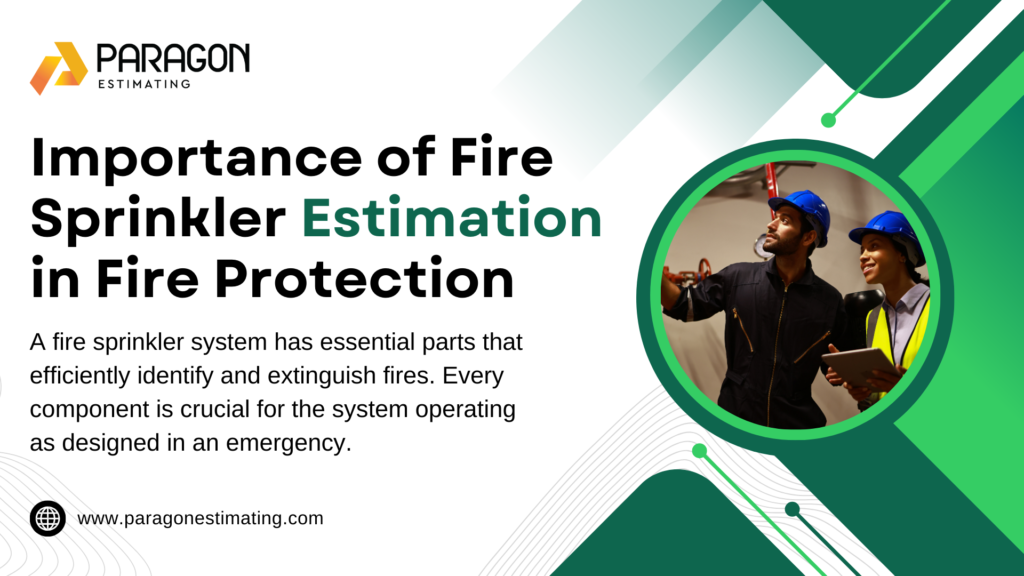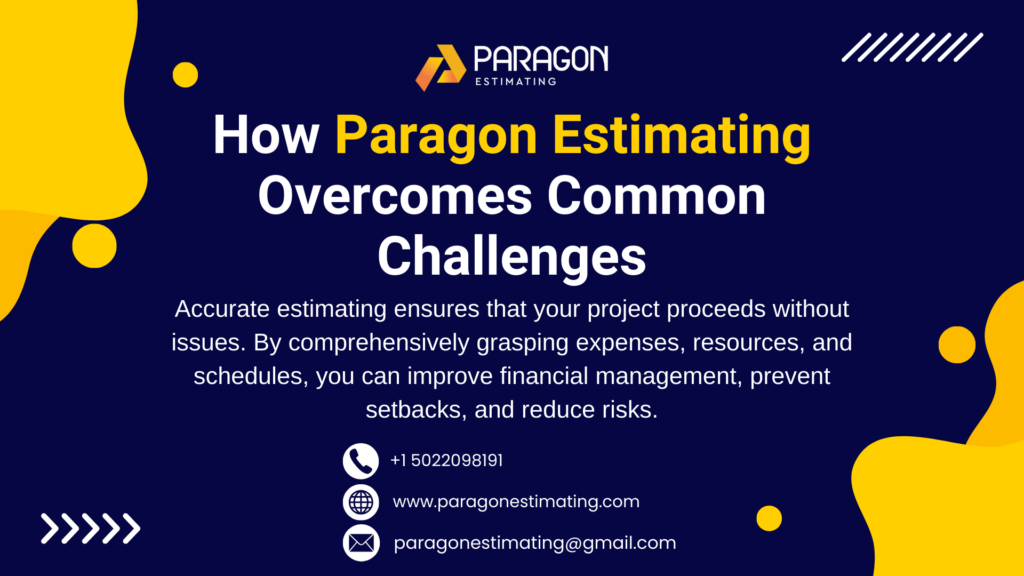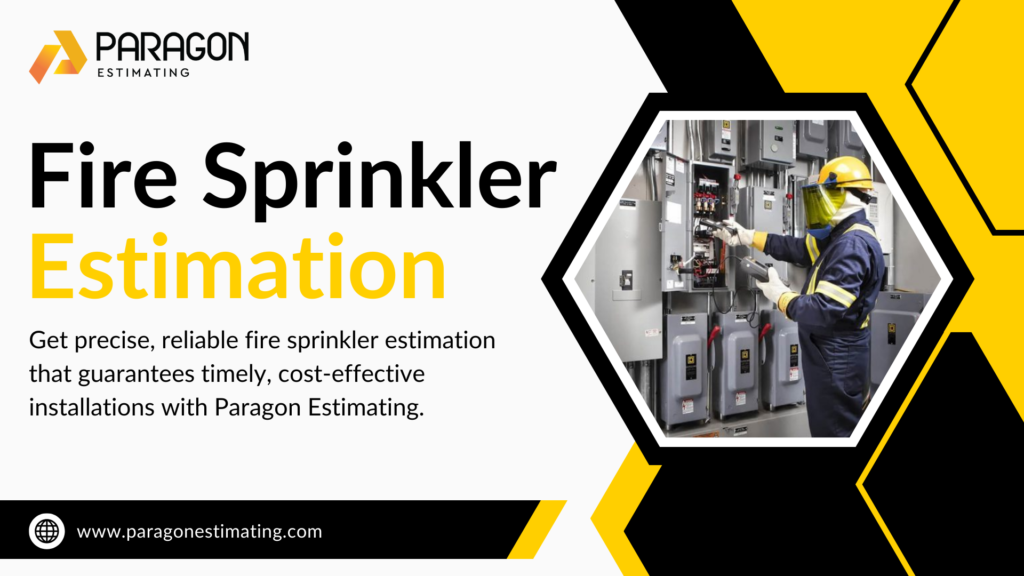Introduction to Fire Sprinkler Estimation
Fire prevention should be the first concern for your house or company’s safety. Ensuring fire safety mostly depends on installing a fire sprinkler system, which is among the most dependable and efficient means. However, to fully understand your space’s expenses, requirements, and system needs, it is essential to get an exact fire sprinkler estimation before you build such a system. Our specialty at Paragon Estimating is offering exact, thorough fire sprinkler estimates to guide your decisions. Whether your property is commercial estimating or residential, our staff guarantees a customized solution appropriate for the situation, regardless of your fire sprinkler cost estimate requirements.
What is Fire Sprinkler Estimation?
Estimating fire sprinklers involves determining the cost and creating the perfect system for a facility. It considers several elements, including local fire regulations, building type, and space size. By evaluating these components, fire sprinkler estimators offer an exact cost estimation for the system’s Insulation Estimating Services, maintenance, and operation. An accurate estimate guarantees that buildings follow all fire safety requirements and helps property owners avoid paying too much for their sprinkler systems.
Why Fire Sprinkler Estimation is Crucial for Your Property
Finding the best system for your site depends mostly on a fire sprinkler estimation. Designed to save lives, minimize property damage, and offer peace of mind, fire sprinklers are. Without a precise assessment, you can find yourself with an ineffective system that is either over- or undersized for your needs.
Safety First
A well-calculated and implemented system guarantees the best defence against fire dangers. Good planning guarantees quick evacuation when needed and helps prevent system failures.
Regulatory Compliance
Fire sprinkler systems must follow local building codes; an accurate estimate guarantees that your system satisfies these criteria. Compliance guarantees perfect approval from safety inspectors and helps to avoid legal problems.
Long-Term Value
A well-designed fire sprinkler system can add safety and raise the value of your house. It’s also a wise long-term investment since it might cut insurance rates.

What Is a Fire Sprinkler System?
Before the estimate process starts, one must understand a fire sprinkler system. A fire sprinkler system is an under-pressure water-filled network of pipes meant to detect and put out flames. Heat-sensitive sprinklers built into the system turn on in response to a fire’s heat being too high. Fire sprinkler systems come in various types, such as:
- Wet Pipe Systems: These systems often run water in the pipes constantly.
- Dry Pipe Systems: Designed for colder climates, these systems compress the pipes until they are triggered.
- Pre-action Systems: These usually combine dry and wet systems in high-risk situations.
- Deluge systems: quickly release large volumes of water. Usually found in high-hazard environments, they
How Fire Sprinkler Estimation Works
Estimating a fire sprinkler system requires important actions to guarantee compliance and accuracy. An expert estimator evaluates your property, computes expenses, and creates a workable strategy catered to your demand. An exact estimate guarantees the best fire protection and helps avoid extra expenses.
Site Assessment
A survey assesses the property layout, fire risk, and local laws in depth. The estimator considers Structural Steel Estimating Services elements, waterproofing estimating supply, and any threats to decide on the optimum fire protection plan.
Designing the Fire Sprinkler System
The estimator decides on the correct wet, dry, pre-action, or deluge type, fire sprinkler location, and water flow. The design process guarantees complete coverage while preserving regulatory compliance and economy of cost.
Cost Calculation
Material costs, labor, licenses, inspections, and maintenance fees are factored in to give a thorough financial picture. Long-term maintenance and possible changes required for system integration also weigh more.
Final Estimate
A thorough, itemized estimate breaks out long-term expenses and installation costs. This guarantees that their fire sprinkler estimation is safe, compliant, and dependable, and lets property owners budget wisely.
What Does a Fire Sprinkler Estimator Do?
Following a property’s need assessment, a fire sprinkler estimator creates an exact cost projection for installation. The estimator assesses the layout, fire protection needs, and local fire rules of the construction to design the most effective system. They also consider the labor cost estimator calculator, supplies, and other expenses related to the installation procedure. A professional fire sprinkler estimator guarantees that the suitable type and size of system is selected for your home, saving you money and avoiding possible safety risks.
Why Consider a Residential Fire Sprinkler System?
Installing a household fire sprinkler system can save lives by greatly reducing the risk of fatality linked to fire. Sprinklers help contain the flames of a fire, giving your family and yourself important time to exit safely. These solutions provide more advantages than just safety. Often, homeowners with fire sprinklers qualify for lower insurance rates, resulting in long-term savings. Moreover, a house with a sprinkler system is considered safer, raising its market value. While improving safety and financial stability, investing in a fire sprinkler system gives peace of mind.
Why Use Fire Sprinkler Estimating Software?
Installing a household fire sprinkler system can save lives by substantially reducing the risk of fire-related fatalities. Sprinklers help to contain the flames in a fire, giving you and your Single-Family Residential Estimating important time to safely flee. These fixes have more benefits than merely those related to safety. Often, homeowners with fire sprinklers qualify for reduced insurance rates, generating long-term savings. Moreover, a house with a sprinkler system is considered safer, increasing its market value. Investing in a fire sprinkler system provides peace of mind, even while safety and financial stability are being improved.

How to Choose the Right Fire Sprinkler Companies Near Me
Selecting the best fire sprinkler company is crucial for ensuring your fire protection system is installed correctly and satisfies all safety criteria. Reputable companies like Paragon Estimating offer premium services to guarantee long-term safety and compliance. Our areas of expertise at Paragon Estimating are system design, compliance tests, and precise fire sprinkler estimation.
Experience and Reputation
Search for businesses with a track record of successful installs. An experienced supplier can effectively manage complicated fire safety needs and know industry best practices.
Certifications
Ensure the business is certified and licensed to estimate the installation of fire sprinklers in your space. Correct certification ensures that the business meets local and national fire safety requirements.
Customer Reviews
Read reviews and get references to evaluate their service quality. Contented consumers show a business’s reliability, professionalism, and dedication to quality.
Warranty and Maintenance Services
Select a firm providing warranty and maintenance to keep your system in the best shape. Frequent inspections and maintenance help your fire sprinkler system last as expected and avoid failures.
Get Your Fire Sprinkler Estimate with Paragon Estimating
Installing a fire sprinkler system is one of the best methods to guard your property and loved ones from the risk of fire. Knowing that your fire safety needs are in knowledgeable hands helps you to relax with accurate, dependable, and thorough fire sprinkler estimates from Paragon Estimating.
Our staff can walk you through every stage, whether you need an estimate for a more extensive commercial estimation property or a domestic fire sprinkler system. Get in touch right now to begin your fire sprinkler estimate and guarantee the protection of your property for years to come. Are you all set to guard your property with a fire sprinkler system? For a tailored quote and to guarantee your fire safety requirements are satisfied, contact Paragon Estimating now!
FAQs
How much does a fire sprinkler system cost to install?
The installation cost depends on the property size, the kind of system, the degree of installation complexity, etc. A household fire sprinkler system may cost two to four dollars per square foot.
How often should fire sprinkler systems be maintained?
Fire sprinklers should be serviced every five to ten years and yearly examined to ensure proper operation.
Can I install a fire sprinkler system myself?
Given the intricacy and need for specialist skills and tools, you are not advised to install a fire sprinkler system. Choosing a skilled fire sprinkler firm guarantees appropriate compliance with local regulations and installation quality.
How can I get a fire sprinkler estimate?
See Paragon Estimating for a comprehensive estimate. Professionals will evaluate your home and offer a realistic cost breakdown for your requirements.
How do I choose the right fire sprinkler company?
Search for a company with a solid reputation, appropriate credentials, good client comments, and a dependable maintenance schedule. Firms like Paragon Estimating offer expert fire sprinkler calculations and system design.



